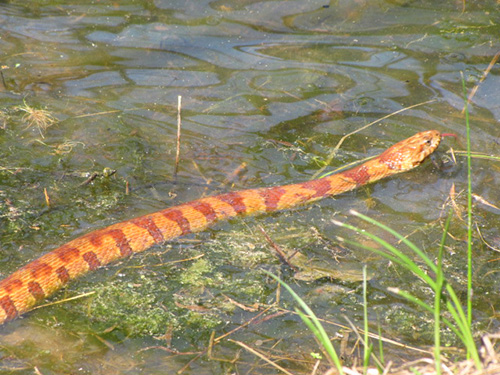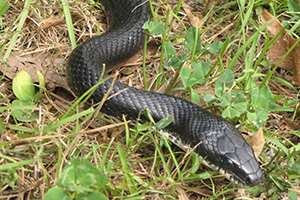Good Snake, Not So Good Reaction
By Bill Willis
July 19, 2017

(Photo courtesy of Bill Willis)
EPA, NIEHS (747KB), and Lake Crabtree (1MB) have produced flyers to spread the word about the benefits of snakes. Plants and wildlife are protected on Federal property, including our campus.
It may sound strange and counter to what you’ve been taught, but snakes are good to have in the environment. Snakes provide a service to us in keeping the rodent, reptile, and insect populations in check. In addition, snakes provide a food source for mammals, birds, or even fish.
Things to keep in mind:
- Chances of seeing a snake are small but not zero.
- Most snakes are non-venomous and not aggressive but will respond to threats, so avoid them if possible. Allow them to get out of your way.
- Look where you step or put your hands.
- Don’t handle an injured or dead snake. A reflex reaction may still get you bitten.
- Use the sight of a snake as a positive teaching tool.

(Photo courtesy of Bill Willis)
There are 37 species of snakes in North Carolina, but only six are poisonous. A triangular head, an hourglass color pattern, the slit pupil, and heat-sensing pit are good indicators of a copperhead.
The Cottonmouth snake is another one of the six poisonous snakes found in parts of North Carolina. Within a few years, the cottonmouth's range may extend into Wake, Durham, and Orange Counties, but they are rarely seen in the Triangle.



